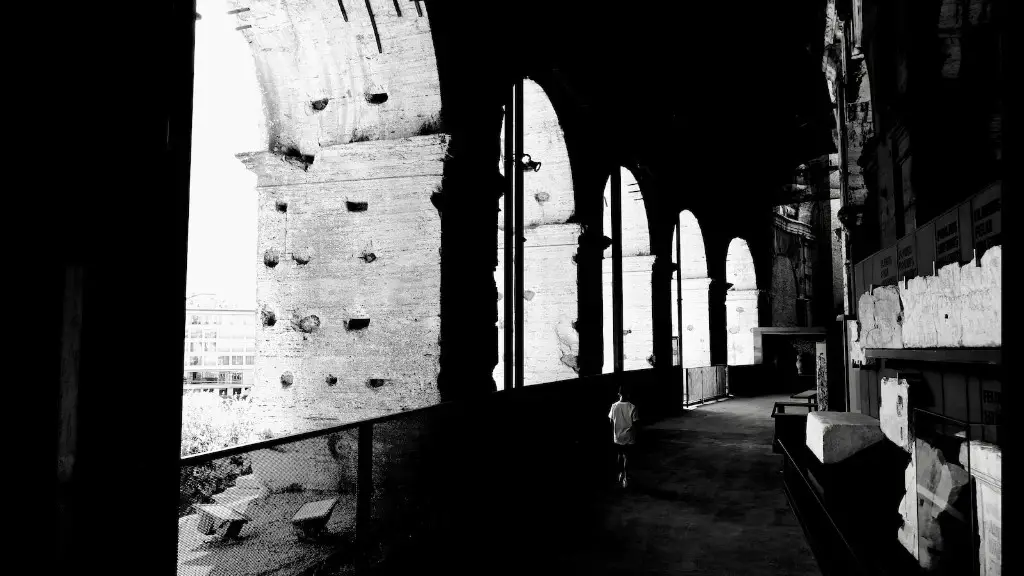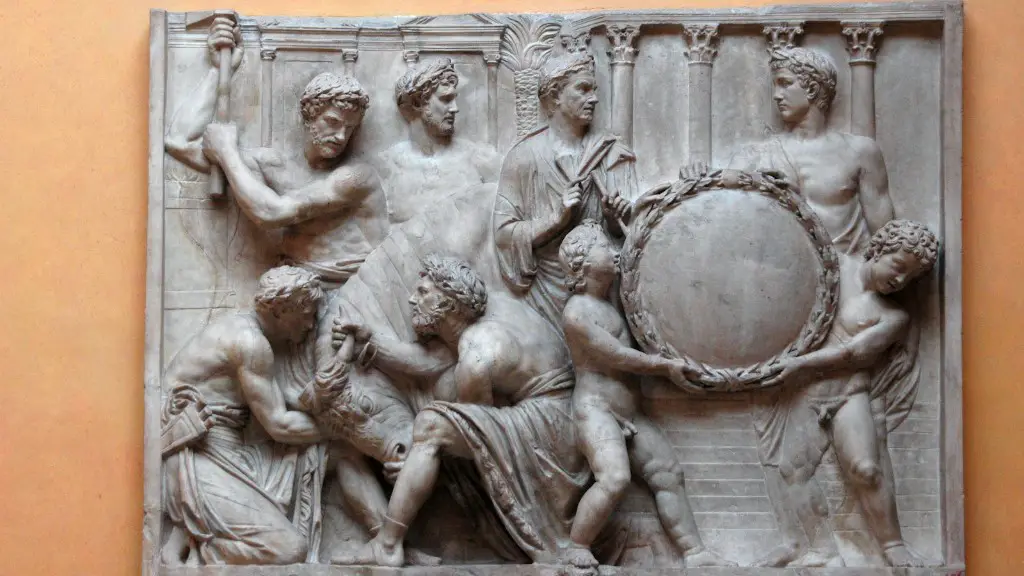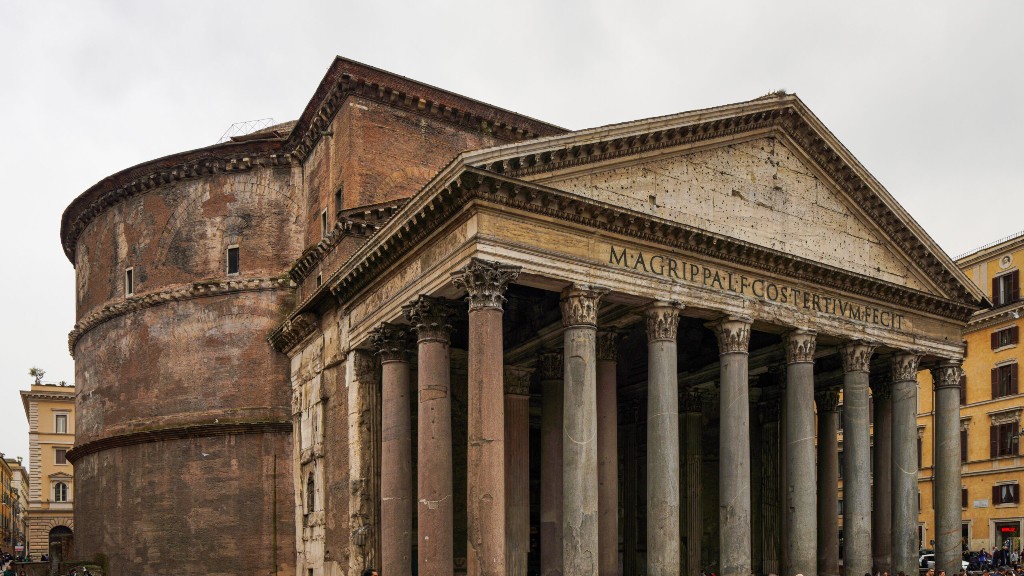Overview
The currency of ancient Rome has an interesting and complex history. From its inception to its demise – and its eventual return – Roman currency was in continuous flux. While it changed in its form and appearance, the same basic commodities formed the basis for its entire monetary system. This article will explore what exactly the currency of ancient Rome was, its motivations and its implications.
Origins
Rome had many different monetary systems throughout its more than thousand-year reign. At the beginning of the empire, Roman currency was mainly constructed from coins made from bronze and silver. This currency was called the denarius, and it was standard throughout the Republic and the empire for many hundreds of years. This denarius was the main source of currency used by Roman citizens to purchase goods and services.
In addition to the denarius, other coins issued by the Roman state were also used in the empire. These were either smaller denominations of the denarius — such as the quadrantes — or larger ones, such as the sestertius. The various coins of the Roman empire were all accepted in the same way and held the same value, regardless of the size of the coin.
Motivations Behind the Roman Currency
The Roman Empire was on a continuous expansionist trajectory, and Rome’s currency was reflective of this. As the boundaries of the empire expanded, so did the number of coins and denominations associated with the currency. This was due in part to the growing availability of resources and the need for new coins to represent the growing wealth of the Roman Empire.
Additionally, Roman currency was used as a tool for increasing political influence. During the early empire, Roman coins were often adorned with the images of political leaders, along with the names and titles of these leaders. This served to increase the emperor’s visibility and to solidify the image of their power.
Roman currency was also used to fund military campaigns and pay soldiers, as well as to buy resources and to construct public works. This was essential for Rome’s military might as well as its continuing popularity with its citizens.
The Economic Impact of Roman Currency
Roman currency had far-reaching economic implications. During its height, the Roman economy was one of the most advanced of its time, and the currency was a major factor in Rome’s success.
The Roman currency served as a medium of exchange and provided stability to the economy. This in turn stimulated trade and commerce, which was driven by the coinage. As the empire grew, so did the economic opportunities and the number of tradesmen and merchants.
The coins also provided a common form of currency, allowing merchants and tradesmen to buy and sell goods and services at set prices. This ensured a degree of uniformity and fairness within the Roman economy.
The Decline of the Roman Currency
The currency of the Roman Empire eventually declined and was eventually replaced by a less formally regulated system of bartering. This happened gradually as the Roman economy began to wane and the resources available to the state diminished.
The coins of the empire itself were often debased with lower quality metal in an effort to produce more coins from limited supplies of silver. This process accelerated the devaluation of the coins, leading to a decrease in their purchasing power.
The Return of the Roman Currency
In more recent times, the Roman currency has been revived in the form of commemorative coins and medallions. These coins have been issued by various governments and institutions, often as a tribute to the historical significance of the Roman currency.
These coins are also popular among collectors and historians due to their symbolism and their connection to the legacy of the Roman Empire. There are many commemorative coins and medallions issued today that pay homage to the legacy of the Roman currency.
Legacy of the Roman Currency
The legacy of the Roman currency can still be seen in modern society. The modern U.S. currency system is modeled on the Roman monetary system, with coins being issued in denominations of one, five, ten and so on. Additionally, many modern currencies also bear images of political leaders, just as the coins of the Roman Empire did.
Furthermore, the concept of money itself still rests on the same principles that the Roman Empire used for its currency. Money is still used as a means of exchange between people and can be used to purchase goods and services. It is also used to fund military campaigns and pay soldiers, as well as to buy resources and to construct public works.
Analysis
The Roman currency played an integral role in the growth and success of the empire. It provided a common form of currency that allowed Roman citizens to purchase goods and services, as well as a medium of exchange for tradesmen and merchants. It was also used as a tool of political influence and to fund military campaigns. Additionally, its modern-day legacy can still be seen in many aspects of life, from currency systems to monetary symbols.
Effects on the Global Economy
The Roman currency had a great impact on the global economy of its time. It served as a medium of exchange that united the world and provided stability to the economy. This, in turn, stimulated global trade and commerce and helped contribute to the success of the Roman Empire. Its legacy of global unity also continued to grow as the years passed and its influence spread.
Today, the legacy of the Roman currency can still be seen in the modern world. Many of the world’s currencies are still based on the Roman system, with coins issued in denominations of one, five, ten and so on. Additionally, the concept of money itself still rests on the same principles that the Roman Empire used for its currency.
Economic Significance
The Roman currency was of great significance for the Roman economy. It provided a common medium of exchange that allowed merchants and tradesmen to buy and sell goods and services at set prices. This ensured a degree of uniformity and fairness within the Roman economy. Additionally, the coins of the Roman Empire were also used to fund military campaigns and pay soldiers, as well as to buy resources and to construct public works.
Furthermore, the Roman currency served as a form of political power. Coins often bore the images of political leaders and served to increase the emperor’s visibility and to solidify the image of their power. This political influence was one of the main sources of Rome’s strength and is still seen today in the images of national leaders on modern-day coins.
Impact on Bartering
The Roman currency also had a great impact on bartering. As the currency became debased from lower quality metal, it began to lose its purchasing power. This caused Roman citizens and merchants to turn to bartering as an alternative method of exchange. Bartering provided them with a more reliable means of exchange and allowed them to continue to buy and sell goods and services.
Despite this decline in the Roman currency, it has remained an important part of Roman culture and identity. In more recent times, the Roman currency has been revived in the form of commemorative coins and medallions. These coins have been issued by various governments and institutions, often as a tribute to the legacy of the Roman currency.
Final Thoughts
The currency of ancient Rome has a long and complex history. From its inception to its decline, Rome’s currency served many different purposes. It provided a common form of currency, which allowed merchants and tradesmen to buy and sell goods and services at set prices. It also served as a tool for political influence and a way to fund military campaigns. Additionally, its modern-day legacy can still be seen in many aspects of life, from currency systems to monetary symbols.


